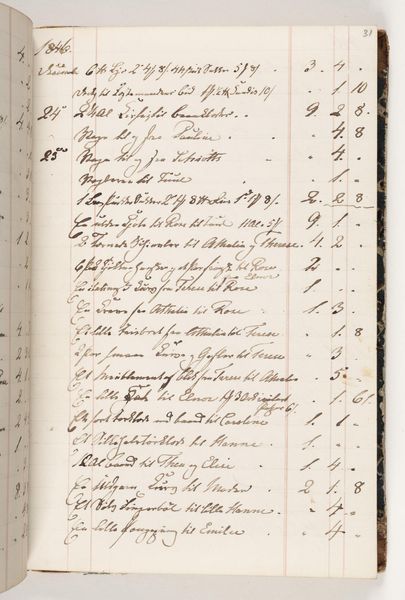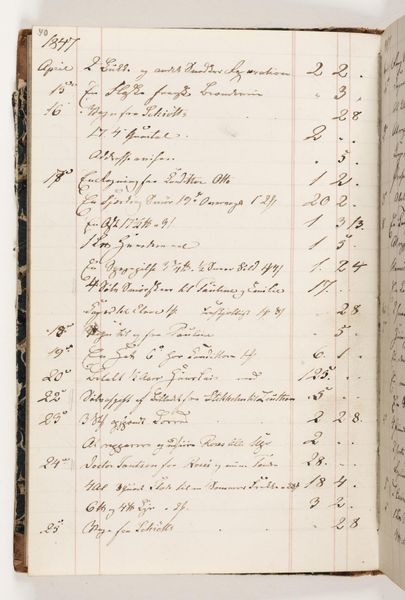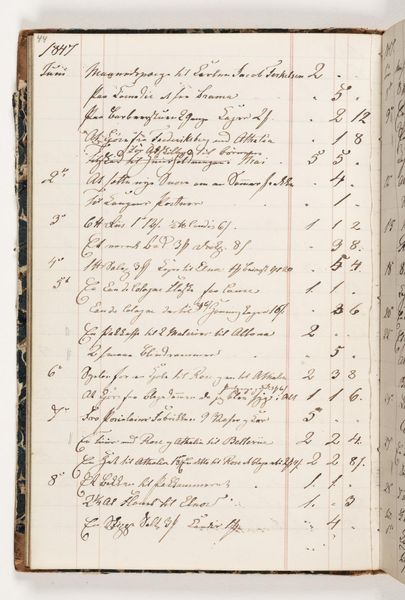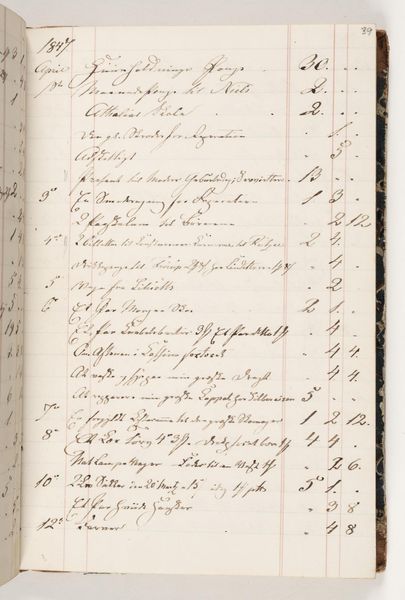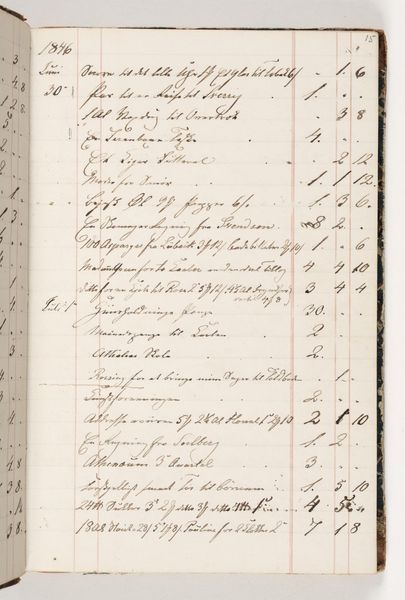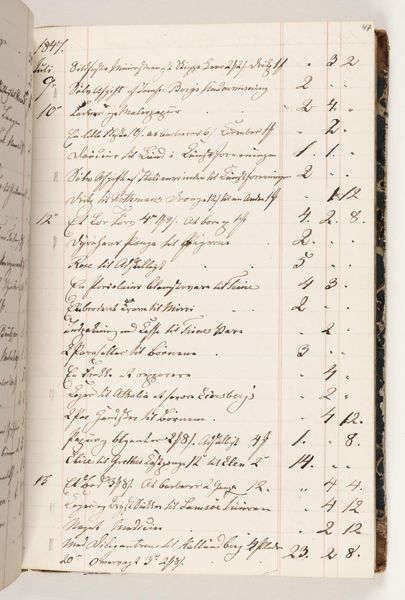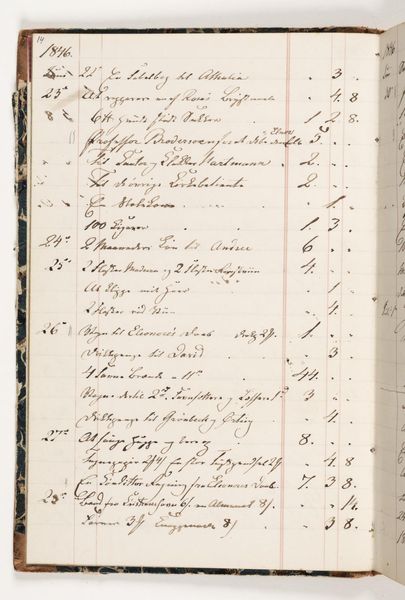
drawing, paper, ink
#
portrait
#
drawing
#
paper
#
ink
#
genre-painting
#
watercolor
#
calligraphy
Dimensions: 200 mm (height) x 130 mm (width) (bladmaal)
Curator: Right, so we have before us Rørbye's "Regnskab 1848," a drawing in ink on paper from 1848. It's...well, it's a ledger page. And yet, I find it strangely beautiful, you know? The script, the layout, almost musical in its arrangement. What do you make of it? Editor: It feels almost like looking at a piece of music, the lines like staves filled with handwritten notes. The ink bleeds slightly into the paper. Since you mentioned "musical", how can something so practical feel so… artistic? Curator: Ah, that’s the magic, isn’t it? Everyday life rendered artful! Rørbye wasn't just documenting numbers, he was also composing a visual record. Think of calligraphy, each stroke carrying intention. And remember the date: 1848! Europe was in turmoil; revolutions bloomed. Maybe this precise bookkeeping was a way to hold onto order amid chaos, an anchor in a storm. It’s just… fascinating, this intimate glimpse. Do you feel the hand behind it, the person, the past? Editor: Definitely. It does feel deeply personal. Like a secret window into his life, hidden within this very ordinary account book. I wonder, did he see himself as making art, or was it just a necessary task for the day? Curator: Perhaps both. Perhaps the act of creating something neat and orderly brought joy in itself. What it says to me, most of all, is how art isn't always found in grand gestures, but often in the small, everyday moments. Editor: That’s beautiful. I’ll never look at an old receipt the same way again. Curator: Me neither. Who knew a simple accounting record could sing such a quiet, powerful song?
Comments
No comments
Be the first to comment and join the conversation on the ultimate creative platform.

